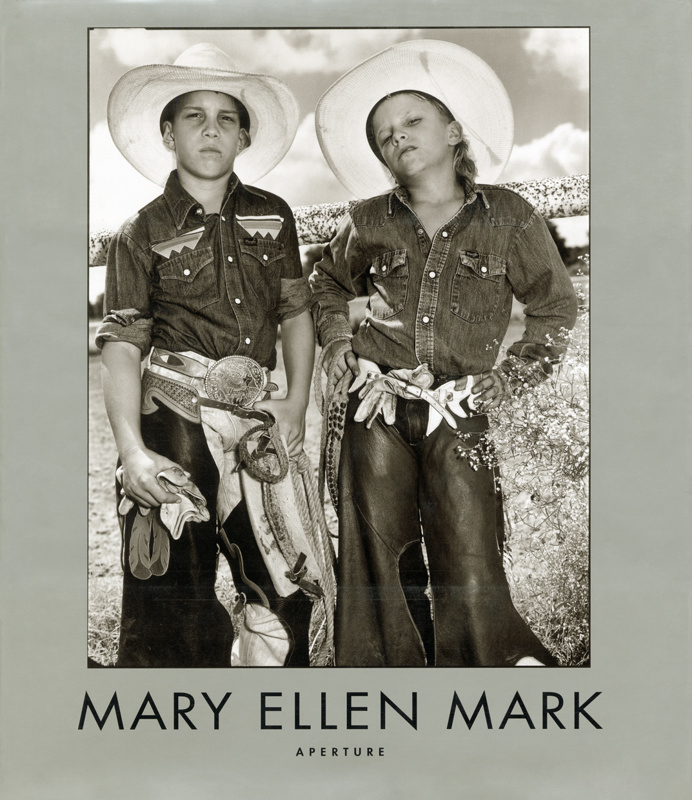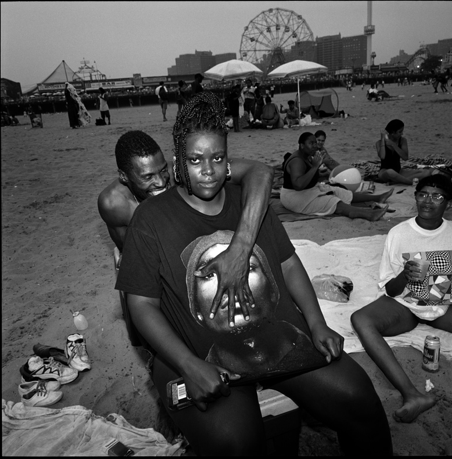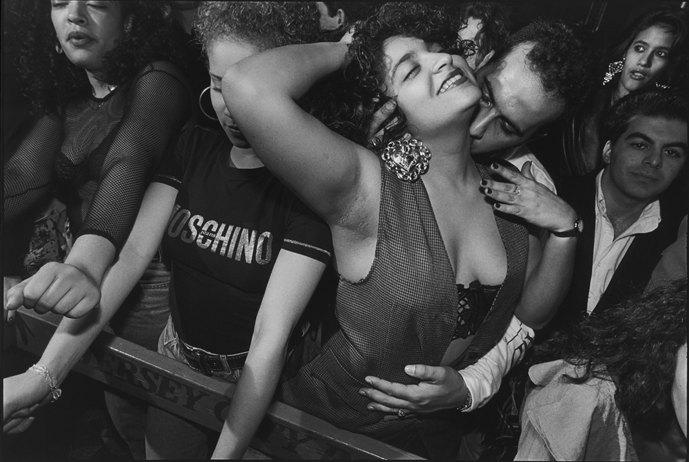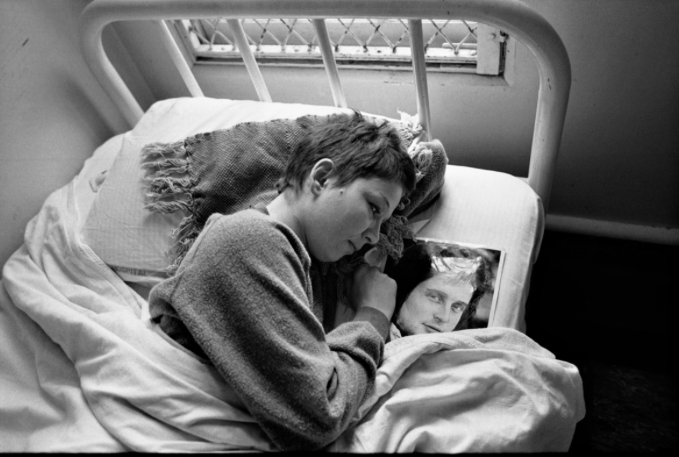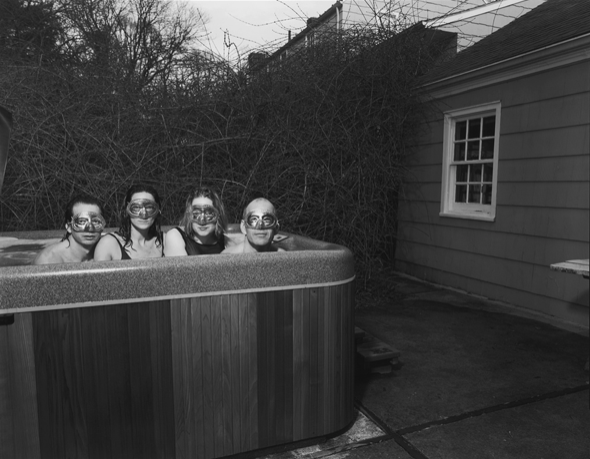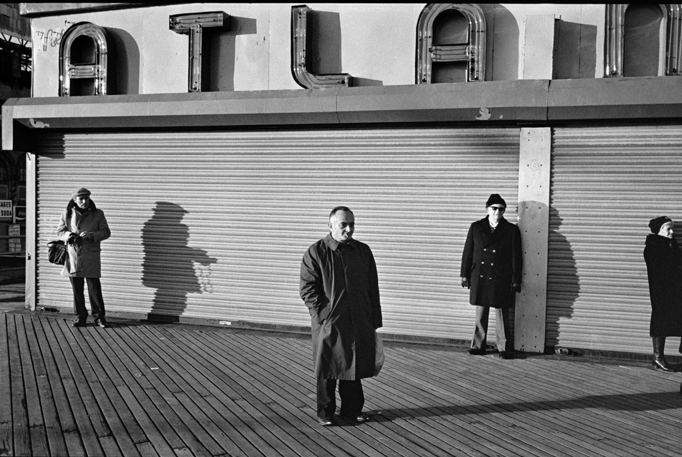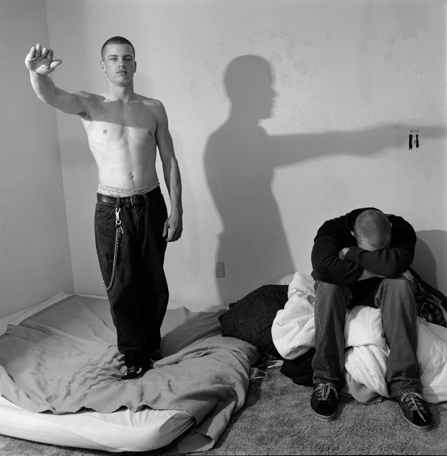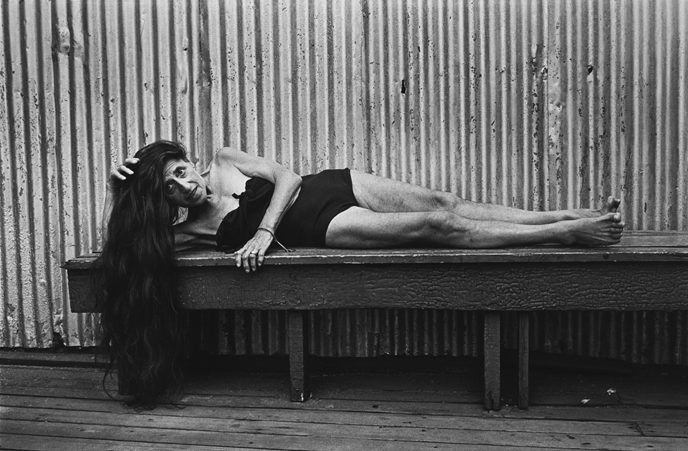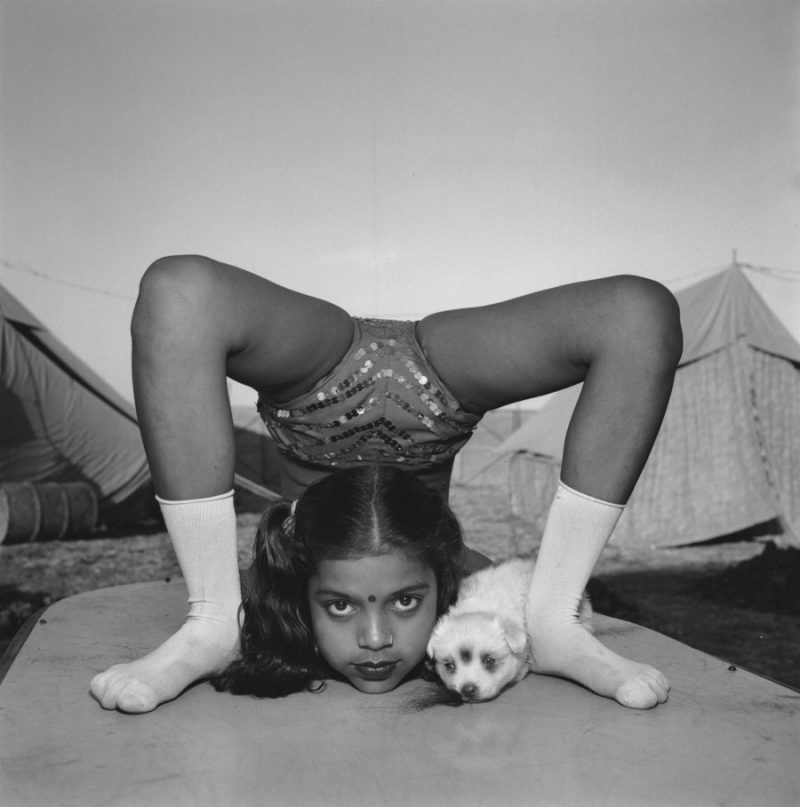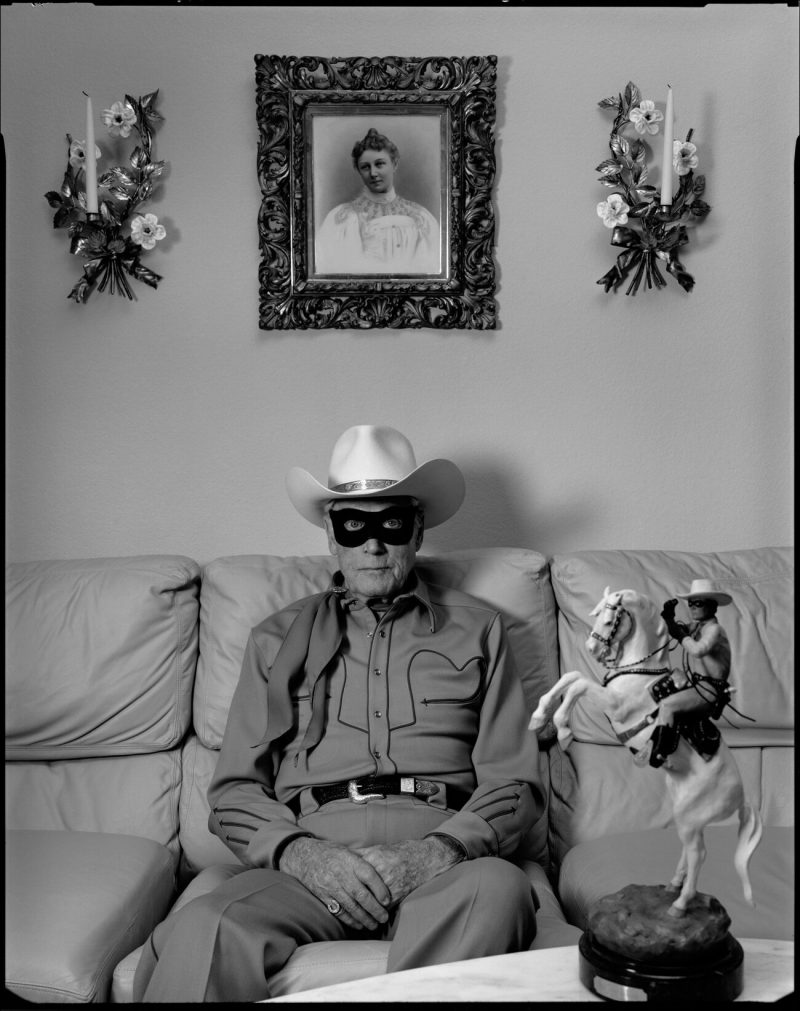Mary Ellen Mark: An American Odyssey 1963-1999
Mary Ellen Mark: An American Odyssey 1963-1999 (Aperture Monograph)
Title: Mary Ellen Mark: An American Odyssey 1963-…
Publisher: Aperture
Publication Date: 1999
Binding: Hardcover
Condition: Very Good
Dust Jacket Condition: Good
Edition: 1st Edition.
Asking USD$100.
The unspoken poetry of our nation revealed by an American master.
The first collection of the extensive and superlative work realized by Mary Ellen Mark in the United States, Mary Ellen Mark is composed of many previously unpublished images, as well as photographs from several of her best-known projects. From “Streetwise” to “The Damm Family,” Mary Ellen Mark includes the most iconic images from these groundbreaking stories, as well as powerful, never-before-seen photographs Mark accomplished in subsequent years. She makes a deeply felt commitment to her subjects, and her empathy and humanity come through in every image.
Mark is unsurpassed at shaping not only the odd but the everyday into genuinely surprising visual icons. With an eye for symbolism and a gift for meticulous composition, she is drawn to a variety of spectacles and situations, and demonstrates a particular affinity for children. Her elegantly revealing imagery creates a fascinating portrait of our complex, amusing, and occasionally unsettling country.
Synopsis:
Recently voted by the readers of American Photography as their favorite woman photographer of all time, Mary Ellen Mark has made some of America’s most iconic photographs. She is unsurpassed at shaping both the odd and the everyday into genuinely surprising photographs that subtly yet powerfully challenge our preconceptions or intensify our convictions. Mary Ellen Mark’s poetic and at times disquieting photographs form a fascinating portrait of a complex, amusing, and occasionally unsettling country and its people.
HUMAN FAMILY
Maya Angelou
I note the obvious differences
in the human family.
Some of us are serious,
some thrive on comedy.
Some declare their lives are lived
as true profundity,
and others claim they really live
the real reality.
The variety of our skin tones
can confuse, bemuse, delight,
brown and pink and beige and purple,
tan and blue and white.
I’ve sailed upon the seven seas
and stopped in every land,
I’ve seen the wonders of the world,
not yet one common man.
I know ten thousand women
called Jane and Mary Jane,
but I’ve not seen any two
who really were the same.
Mirror twins are different
although their features jibe,
and lovers think quite different thoughts
while lying side by side.
We love and lose in China,
we weep on England’s moors,
and laugh and moan in Guinea,
and thrive on Spanish shores
We seek success in Finland,
are born and die in Maine.
In minor ways we differ,
in major we’re the same.
I note the obvious differences
between each sort and type,
but we are more alike, my friends,
than we are unalike.
We are more alike, my friends,
than we are unalike.
We are more alike, my friends,
than we are unalike.
AUTOBIO POEM
LASHAWNDREA
Helpful, kind, fair, good listener,
Sister of Keanna, Daylon, Mikka,
Who loves pizza, ice cream, fruit,
Who feels funny, unselfish, lucky,
Who finds happiness in myself, my family, and going on vacation,
Who needs love from my family, people to like me and to learn in school,
Who gives loyalty, friendship and understanding,
Who fears losing a member of my family, not being able to live with my mom and someone breaking in my house,
Who would like to see a castle, Disneyland or Disneyworld,
Who enjoys the outdoors, tag, and roller skating,
Who likes to wear shorts, Nike shoes, jogging pants,
Tiny’s daughter, La Shawndrea Blackwell, wrote this poem when she was nine years old.
AFTERWORD
Looking back, my work in America strikes me now as being a long and blessed journey—a journey that has taken me from one end of this country to the other many times and allowed me to enter into the lives of countless people. From the extremely poor to the very rich I have been a witness to some of the things that make this country so extraordinary. I have photographed people at baby beauty pageants, and in singles’ bars; at twins’ conventions, and Ku Klux Klan gatherings. I have crossed paths with some wonderful people and some terrible ones. One thing is for sure, for all of its ups and downs it has always been an incredible adventure. You can find everything in this country, anything goes, and anything can happen. My travels through America have defined my vision as a photographer.
In my work, I am guided by what moves and surprises me. Photographs can be enigmatic. They sometimes work because of what is included in the frame; and sometimes because of what is not. There’s no formula for taking pictures. It’s a mysterious process; an endless challenge. Ideas for projects are constantly unfolding and possibilities reveal themselves around every corner. The trick is to be open enough to recognize them the moment they appear and driven enough to pursue them.
I started photographing in the early sixties when I was a student at the Annenberg School for Communications. From my first day out on the street with a camera, I knew that was it: I was going to be a photographer. That childhood sense of excitement has never left me, nor has my enjoyment of the contact with people that photography gives me. Taking pictures can be a contradiction because the camera at once facilitates that connection with the subject and at the same time provides a necessary distance. Sometimes my work focuses on aspects of life that are very difficult. When the camera is between me and the subject, it often shields me from a grim reality while allowing me access to otherwise impenetrable worlds.
In the early 1970s I worked on Milos Forman’s film One Flew Over the Cuckoo’s Nest making still photographs. While the film was being made Dr. Dean Brooks, who was the head of Oregon State Hospital, gave me a tour of the facilities. The patients in Ward 81, the hospital’s maximum-security women’s ward, fascinated me and I returned to photograph there two years after the film ended. This experience profoundly changed the way I approach my work. Since then, many of my books like Ward 81, Falkland Road, Streetwise or Indian Circus have concentrated on a small group of people who live in a clearly defined area. This provides an anchor allowing me to return day after day to explore the group and to intimately document their rituals, customs, and lives.
I try to spend as much time as possible on a project to build a rapport with my subjects. Intimacy is very important in my photographs. Being a woman is often an advantage in enabling me to achieve this intimacy because people, especially strangers, are less threatened by women. In Ward 81, the women had to know and trust me before they would allow me to enter their painful lives. As a woman, I was able to photograph the patients bathing and witness the most personal details of their lives. Tiny, from Streetwise, was able to relate to me in part because I am a woman. The men in her life were mostly customers and she had a different relationship with them. The prostitutes in Bombay were much more open to me for the same reason. And the extremely macho Dean Damm would have definitely been threatened by the presence of a man talking photographs of his family.
I photographed the Damm family twice, first in 1987 and then again in 1994. As it turned out, both times were pivotal moments in their lives. In 1987, Linda, Dean, Jesse, and Crissy had just been thrown out of a shelter. Sometimes they stayed in a motel for the weekend, if Social Services could arrange it, but mostly they all lived in their car. Seven years later, they were again desperate, squatting in an abandoned ranch. Jesse and Crissy were twelve and thirteen and not attending school. There were two more children, Ashley, six; and Summer, four. Linda and Dean were heavily into drugs, and consumed by the mounting pressures in their lives. I was able to locate the Damms the second time because, like Tiny, I gave them my phone number and they would call collect now and then to tell me what was happening in their lives. Photographing the same people over many years can be a very intense experience.
I much prefer to photograph people I care about. Often, the subjects of my photographs, have become my friends. To develop any degree of trust with someone, a photographer must be very honest. Photographing the Ku Klux Klan was difficult as they were so paranoid and didn’t really trust me. (Perhaps they sensed that I didn’t accept their beliefs and I felt uncomfortable.) A photographer has to take control of the situation. Whether the subjects are unknown or very famous, they need to have confidence in the photographer. With documentary projects, my subjects know from the outset that they will be spending a lot of time with me. It is not always easy to find people who can be so open with their lives in the presence of a camera. Young teenagers are interesting to photograph as they are often much less inhibited than adults and allow you to see just who they are.
Tiny (from Streetwise) was twelve years old when we met and was completely candid and open in front of the camera—except for the very first time I saw her and took her picture in a parking lot (She thought I was the police, screamed and ran away). Once we got past that, Tiny was totally herself. Now, eighteen years later, she still loves being photographed. We met again recently—it had been about five years since we last saw each other. She is now a single mother with five children all by different fathers. She is still beautiful. For the first time since I have known her we related to each other as adults and peers. Her own children are wonderful. I especially bonded with twelve-year-old Shawnee (La Shawndrea) and was deeply moved by her autobiographical poem that I have included in this book. Tiny’s life is so difficult. She tries very hard to make it work and yet she essentially survives on welfare. Still, Tiny has many dreams. They are not as grand as they were when she was twelve “I wanna be really rich … and live on a farm with a bunch of horses, which is my main best animal … and have three yachts or more … and diamonds and jewels and all that stuff”. At thirty, she wishes for a man to treat her well and take care of her and like any mother she wishes for a better life for her children (of course she would still like to be rich one day). Watching her grow and change over time, getting to know her children continues to be a privilege for me, a unique experience of trust and understanding that has only grown over time.
From my earliest days as a photographer, many of my subjects have been on the edge of or outside the mainstream of our culture. Some of them were pushed over the edge due to painful circumstances and some of them manage to survive even with the most unspeakable and unjust obstacles placed in their lives. I’ve always tried to let my photographs be a voice for people that have less of an opportunity to speak for themselves.
In the mid-sixties, at the start of my career, magazines were like sponsors or patrons. Documentary work was a major part of magazines. In those days my magazine work and my personal work often overlapped. Now that’s changed. Documentary assignments are almost nonexistent. These days the money to support myself and my personal work comes primarily from portraiture assignments for magazines, some commercial work, and teaching. Still with assignments, I always try to find the quirkiness in my subjects, to go beyond clichés and discover the common human element that connects people all over the world.
I like to think that my photographs stand on their own as singular images. In that sense, I am not really a photo-essayist. I am always thinking about making pictures that speak for themselves. A great picture has to go beyond the literal subject matter. In the way that poetry is beautiful and emotional in its abstraction, photographs have to be a little abstract, too. Ultimately, I want my photographs to move people.
Looking back on this journey through America I would not change a thing. Without photography my life would have been unimaginably different. For one thing, I would have missed meeting all of these amazing people that shaped my life. I am very grateful and looking forward to many more years of making photographs, (as) the odyssey is not yet over.
Mary Ellen Mark, June 9, 1999
